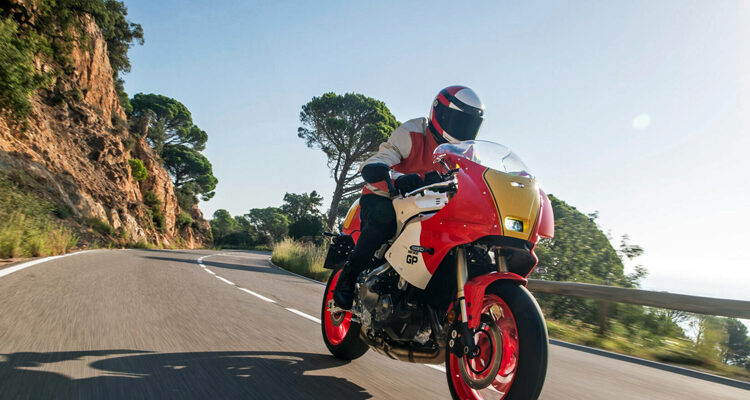The late fall is the most important time on the calendar for motorcyclists. While most of us Canucks are attaching the trickle charges and measuring out shots of StaBil for our rides, the OEMs are busy pulling the silk from their latest and greatest. Here’s a brief rundown of the new hotness.
Aprilia
The big news out of Noale comes in the form of their tiniest offering. The Aprilia RS 457 is a track-focused pocket rocket powered by a liquid-cooled, parallel twin engine that develops 47-horsepower in a machine that only weighs 158 kg (dry).
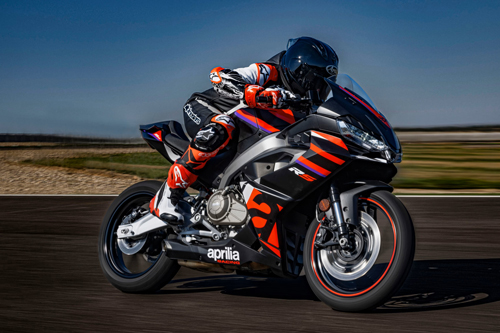
The RS 457 features throttle-by-wire fuelling and, as such, boasts three rider modes to tailor performance. The chassis is an aluminium frame that uses the new twin motor as a stressed member. There is 4.7-inches of travel up front via the 41mm fork and the steel swingarm will pivot some 5.1-inches in the rear. Suspenders are preload adjustable at both ends.
Braking is handled via a single calliper at either end, both of which are ByBre units (Brembo’s baby-bike unit) and features a dual-mode ABS which will allow riders to turn off the sensors to the rear to enable them to “back it in” on the track.
Pricing and availability are still a bit of a mystery, but we should learn more in the new year.
BMW
The Bavarians have been incredibly busy, releasing revamps on a number of models including the lust worthy M 1000 XR, which is a 201-horsepower juggernaut with all-day comfort ergonomics.

They also just launched the successor to the R NineT line, which is the R 12 nineT. Styled to match the sexy modern classic roadster it replaces, the “12” is really just an evolution of that bike, now with a new one-piece trellis frame, better integration of the airbox and a funky new exhaust. A cruiser version – the R 12 – is also available and a completely new bike that BMW hopes will eat some of H-D’s lunch.
Topping the headlines though, is the all-new R 1300 GS. BMW’s best-selling adventure machine. It has been completely redesigned from the ground up, and is now powered by a larger, 1300cc, 145-horsepower, air/liquid-cooled boxer twin and the bike is around 12 kgs lighter, overall.
The changes are plentiful with the new GS, including movement of the transmission from behind the motor to beneath it, to better centralise mass. The iconic paralever suspension has also been reworked to deliver more feel while also weighing less and, when optioned, is controlled by a fully automatic adjustability suite that will lower the machine when coming to a stop.
I could go on for many more digital pages with the new GS, but need this space for everyone else’s new wares. Hopefully we’ll get one into the garage for testing when the riding season resumes.
Ducati

The big news from this Italian firm is also about something small but mighty. In this case, the Ducati Superquadro Mono debuts as the world’s most powerful thumper – a 659 cc single cylinder with desmodromic valves that revs to 10,250 rpm and cranks out 77.5 horsepower – and calls the all-new Hypermotard 698 Mono home.
The Mono version of the Hypermotard takes Ducati’s fun-defining hooligan bike and distils it down to a lighter, more agile machine. A full suite of race-derived electronics come baked in to allow for fully tailored hooliganism with a side of safety. Equip the machine with the “track only” Termignoni exhaust and you even score an extra 7 hp!! I’ve long been a fan of Ducati’s SuMos and fully expect this one to put massive smiles on riders faces.
Honda
The big news from Big Red is the introduction of the Honda Transalp 750, a middleweight adventure machine with some serious “this porridge is just right” kinda vibes.
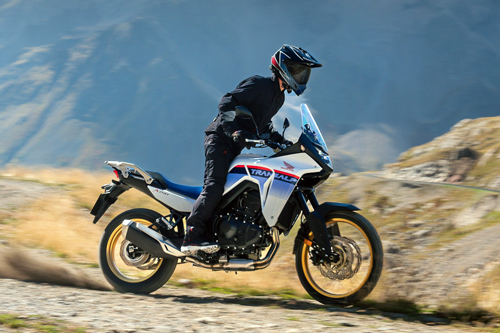
The engine is Honda’s tried and true 755cc, parallel twin unit from their NC750X model. There is no change in tune for the Transalp as the 270-degree crank spins up about 83-horsepower for us North Americans (European units get 90.5) and the power is put down via a 6-speed manual transmission. There is no DCT option for the Transalp (at least yet) but it does feature a slipper clutch and four different riding modes.
Suspension is handled by a 43mm Showa fork and remote reservoir Showa shock in the rear. Both ends can be adjusted for preload and travel is pegged at just under 8-inches, while delivering a saddle height of 855mm.
For wanderlusters on a budget, the Transalp 750 may be the bargain you’ve been waiting for. At $13,488 it offers up quite a bit of machinery and capability that undercuts much of the competition.
Kawasaki
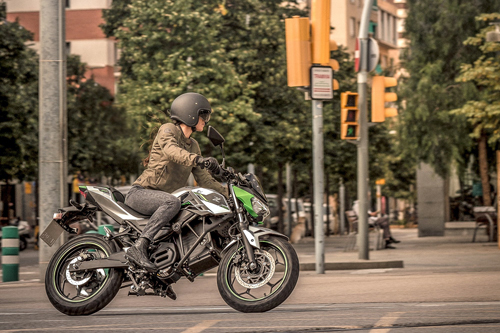
If you’re a lifelong fan of Team Green, you’ll no doubt be salivating at the 40th anniversary liveries that the Ninja lineup receives. The mix of Lime Green, Pearl Crystal White and Blue is legendary and has me hankering for some Night Ranger. It also has me head scratching to make room for a ZX-4RR in those colours…
Of course it’s not all about nostalgia at Kawasaki these days as the brand has introduced two all-electric models as well. The Ninja and Z e1 are the first battery-powered motorcycles to come from the brand and both should carve out a nice piece of the urban commuter landscape.
With no clutch to worry about, removable batteries, smartphone integration and a 67 km range, both offer a fun and engaging manner of emissions free travel. Speed is limited to 85 km/h, so you won’t see these bikes on any major highways.
Moto Guzzi
With the investment in last year’s debut of the liquid-cooled, 1,024cc, transverse V-Twin, you knew it wouldn’t take long for Moto Guzzi to put that engine to use in other machines.
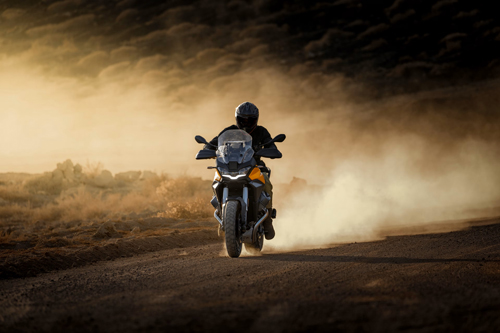
Returning to their lineup, and featuring that same 115-horsepower unit, is the Moto Guzzi Stelvio. Named after the famed Stelvio Pass, you can think of this bike as Guzzi’s flagship go-anywhere tourer with more of a road bias, and boasting a collection of amenities and features that the more rugged V85 just doesn’t offer.
Namely the Stelvio is the first Moto Guzzi equipped with the PFF Rider Assistance Solution available as a factory option. Built on 4D Imaging Radar technology, the system employs two radar sensors to enable Following Cruise Control (FCC), Forward Collision Warning (FCW), Blind Spot Information System (BLIS), and Lane Change Assist (LCA).
The system is part of an electronics package that includes a 6-axis IMU, which analyses inputs and optimises the bike’s cornering ABS. There are five ride modes (Tourism, Rain, Street, Sport, and Off-Road) with various presets for three different engine maps, four levels of traction control, three levels of engine braking, and two levels of ABS control. These settings can also be personalised, allowing riders to fine-tune the parameters to match their individual preferences.
Suzuki
Think that crossovers are only a 4-wheeled phenomenon? Well, think again because Suzuki has stuffed a Gixxer-thou motor into a stilted chassis and dubbed it the GSX-S1000GX.
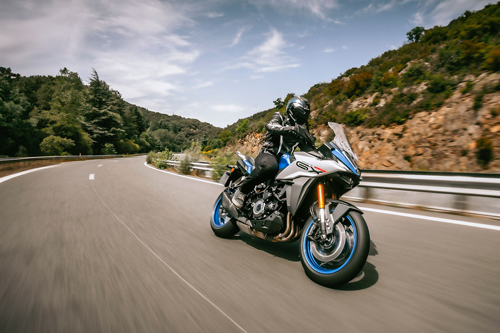
Kidding aside, this new Suzi looks the absolute business for comfy canyon carving sessions. Similar to the BMW’s 1000 XR bikes and Kawasaki’s Versys 1000, the S1000GX boasts superbike levels of performance in a package that won’t cripple riders looking to spend an entire tank’s-worth of riding at a time (or more).
With 17-inch wheels and Dunlop Sportmax rubber, handling should be both nimble and quick while the Suzuki Advanced Electronic Suspension and Active Damping work to deliver smooth and confident road manners.
Triumph
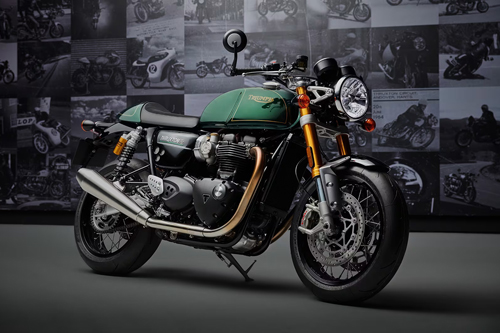
The lads from Hinckley have been a busy bunch of late. Not only did they debut their 250cc motocross bike, but they also pulled the wraps from their all-new line of 400cc, 40-horsepower singles, which includes both the Speed 400 and Scrambler 400 X. Both of these bikes are being built via Triumph’s partnership in India and, based on early impressions, look poised to shake up the beginner market by promising Triumph’s renowned attention to detail and built quality in a compact and affordable package. And if the spy-shots are to be trusted, expect a Thruxton cafe racer style option to join that fold.
Speaking of Thruxtons, the mighty Thruxton 1200 is making its final lap of the track. Available as a special, limited “Final Edition”, the last of Thruxtons is dripping with the beauty and style that the original factory cafe racer deserves. As an owner of an older, air-cooled Thruxton 900 I will be sad to see the model no longer on offer.
Yamaha
If Kawasaki’s “bold, old graphics” treatment of their Ninja lineup has you salivating like us, then you’ll probably be equally gobsmacked by the retro-tastic Yamaha XSR900 GP.

Built upon the riotously fun Yamaha XSR900, the GP version features a fairing package inspired by their 80’s YZR500 Grand Prix bikes. Those plastics wrap around the 117-horsepower, 890cc CP3 triple that can be found in Yammie’s MT-09, XSR900 and Tracer 9. Suspension is courtesy of KYB and is fully adjustable, and a full suite of IMU-controlled rider aids (as well as a quickeshifter) are also equipped.
This gorgeous piece of retro kit is currently destined for Europe and Asian markets only, but given the close ties and graphics inspiration of U.S. riders like Eddie Lawson and Wayne Rainey, we expect to get a container or two floating our way soon.



